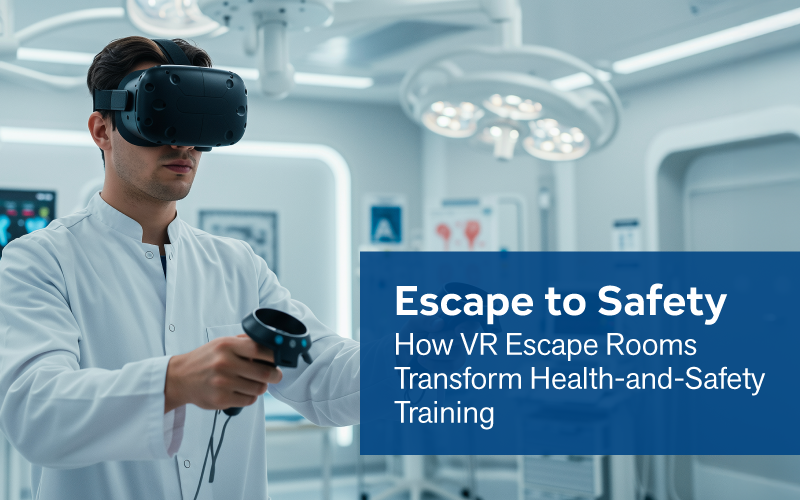A forklift backs up too quickly, a technician skips a lock-out step, and an unfamiliar visitor reaches for a chemical spill kit. Most health‑and‑safety lapses happen in seconds, yet the consequences can reverberate for years. Traditional slide decks and toolbox talks often struggle to recreate that sense of urgency. Virtual‑reality (VR) escape rooms flip the equation: they let people feel the pressure of a hazardous situation, then “fail forward” in a virtual environment where no one gets hurt. With more than half of companies already weaving VR into their learning strategy, now is the moment for L&D teams to harness the escape‑room format and transform behaviour on the front line.
Why Pair VR with an Escape Room?
- Immersion that sticks. In a multi‑modal study, learners finished VR courses up to 4× faster than in‑class peers and left 275 % more confident in applying what they’d learned. Speed matters when your audience is a shift worker with only a 30‑minute handover window.
- Real consequences, zero harm. The National Safety Council’s Work to Zero report notes that VR lets employees “train on potentially hazardous situations while remaining in the comfort and safety of a non‑hazardous location,” improving knowledge recall and retention over classroom methods.
- Game mechanics drive teamwork. Healthcare researchers who built a falls‑prevention escape room for Veterans Affairs staff saw teams rate the activity 94/100 for boosting their ability to spot hazards; the format “stimulated critical thinking skills and promoted team collaboration.”
Lessons from the Front Lines of Game‑Based Learning
During our recent ELB Learning webinar, designer Lydia Symchych and clinical educator Shawn Davies described building Breathless Bounty—a lighthouse‑themed asthma escape room—for conference attendees and online clinicians. Several principles translate directly to health and safety use cases:
- Lead with empathy, not exposition.
Players entered Rose’s cluttered kitchen first, noticing overflowing inhaler canisters before any quiz question appeared. Putting hazards “in plain sight” lets workers connect regulations to real‑world stakes, whether that’s a frayed electrical cord or an unguarded pinch point. - Align puzzles to job‑critical verbs.
If your objective is lock‑out/tag‑out mastery, design a sequence in which the room will only “unlock” once learners isolate, de‑energise, and verify a virtual pump. The puzzle becomes the practice. - Show, don’t tell, the social context.
Rose’s overdue bills and remote lighthouse location highlighted systemic barriers to care. In an industrial setting, scattered personal protective equipment (PPE) or a malfunctioning alarm can spark dialogue about organisational culture, not just personal compliance. - Balance accuracy and engagement through rapid feedback loops.
The Breathless Bounty team involved subject‑matter experts early, then used short play‑test cycles to prevent clinical drift. Safety content benefits from the same rhythm: let specialists review interactive prototypes before graphic polish begins.

Counting the ROI
Once the virtual environment is set up, VR sessions can run back‑to‑back on-site or remotely. Studies show that beyond ~375 learners, VR outperforms classroom training on a per‑learner basis. Add the avoided downtime and reduced travel, and the business case strengthens further, especially for distributed or high‑risk workforces.
The Road Ahead
Affordable, standalone headsets, portable hygiene sleeves, and LMS‑integrated analytics mean VR escape rooms are no longer a moon‑shot experiment; they’re an accessible extension of your existing learning ecosystem. By blending authentic hazard scenarios with the thrill of beating the clock, you move safety from a compliance checkbox to a memorable, team‑owned experience.
Safety stories don’t have to end with incident reports. Let’s give employees a space—realistic, immersive, and risk‑free—to rewrite the script and walk back into the workplace prepared to keep themselves and their colleagues safe.








